News
Green Manure in Horticulture: How, When and Why
News _ 30 NOVEMBER _2018
Let’s go back to the topic regarding crops which don’t produce harvest. Do you know which benefits they can bring to your company? Now we will analyze the green manure technique: how you can use this process in horticulture and all the possible solutions.
Crops which don’t produce harvest are useful for the protection of the soil and the improvement of fertility and biodiversity. These crops are known as green manure because in the past, they were “green manured” with the plough. Today the term green manure indicates also cover crops or catch crops in order to underline some of important features of these crops. The Anglo-Saxons call this procedure green manure because it can replace feces of animals in the manuring of cultivated lands. We will analyze the topic of the green manure with specific attention to the horticulture, in particular the one in the greenhouse, by introducing some practical solutions. These pictures show demonstrative tests about green manure crops in greenhouse made by Sata S.r.l., a society for agronomic consultation.
Productive cycles in horticulture follow one another without leaving time for the introduction of green manure. Always in horticulture, green manure becomes the basis technique to contrast the decline of the fertility. The soil can quickly reach the condition called soil fatigue. In order to avoid this phenomenon it’s important to apply not only the rotations, but also the green manure technique. The fact that the soil has to rest by avoiding to be cultivated for a certain period it is not the right solution, this technique represents not only a waste (from an ecological point of view), but also it brings the soil to an depletion of nutrients, a decrease of the organic substance and it has no effect on pathogens and parasites.
In fields with Spring-Summer cycles, the farmer can apply the green manure in Autumn or in Winter. He has to choose the right plants for the cover crop between micro-thermic species, for example winter grass plants, rapeseed and some legumes (this type is common in the center and south of Italy). Conversely, with Summer-Winter cycles of production (for example with the chicory) or during Spring (regarding the nightshade berries) it’s possible to insert Spring green manure crops. In this case, you have a wide possibility of choice for the species and also the opportunity to pursue other objectives in addition to this technique. Besides, in Spring, the development of the green manure can be easy to include in the rotation of the farm.
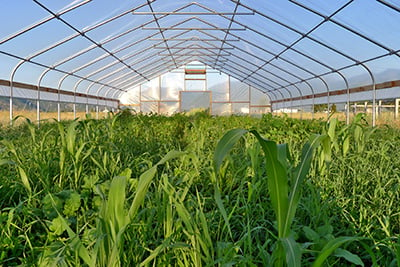
In order to do an accurate choice, it’s useful to understand the effects that different species can create: the introduction of a substance with different biochemistry composition; conservation of the nutrients in the soil; extraction of useless nutrients; mechanical action carried out on soil by roots etc..
Green manure against parasites.
In the greenhouse the application of plants capable of contrasting parasites can be very useful, in this environment it’s difficult to apply an effective crop rotation because there are less production choices.
Some of parasites are attracted to these plants, they reach the roots in order to eat them. Specific plants like Tagetes spp., Lantana camara, Asparagus officinalis or Crotalaria juncea attract the parasite, this one reaches the roots and discovers that they can’t be eaten, then it starts the deterioration. Other plants are defined as trap plants (for example Solanum nigra) because they can produce a substance which kills the parasite. It’s important to consider which parasites you aim to contrast, because every family is different.
Other families of trap plants are Crucifere or Brassicacae (the most effective are Brassica nigra, Eruca sativa, Raphanus sativus, Sinapis alba, etc.). They release specific substances (as glucosinolate and glucosidic) which diminish the development of fungus, parasites and insects. At the same time, some of these plants (like Crotalaria juncea) support the development of fungus which are predators of nematodes. Thanks to the green manure, all of these species can supply the soil with organic substances which allows the development of micro-organisms useful on the crops and in the soil.
There are some plants which have an high biocidal action and in order to improve this feature it’s necessary to carry out a chopping before the burial.
Stone burier machines can be very useful for the distribution of plant residues in soil.
Grass plants in greenhouse: a new strategy
The application of grass plants for green manure has a specific strategy aimed to optimize the accumulation of organic substance and improve the biodiversity inside the greenhouse. In fact, grass plants comes from the monocots families while horticulture crops are dicotyledons. Thanks to the taxonomic differences between these species, horticulture crops and grass plants don’t share any disease and only few parasites. Grass plants generate lots of organic substance which is characterized by a slower decomposition (in some circumstance this is an advantage). They cover the soil and suffocate potential infests, they also have roots which help the balance of the soil.
The adequate grass plants for Summer cycles in greenhouse are for example sudan surghus and gentle surghus, while for Winter cycles the avena strigose (which has to be planted in Autumn or Spring). In Winter cycles it’s possible to employ all the species normally applied for cover crops, for example winter-autumn cereals, oats etc.
The gentle surghus is a C4 cycle plant (like corn), it’s adequate for the warm environment of the greenhouse where it can express its genetic potential in terms of speed of growth and production of biomass (6-7 t for hectare of dry substance). This specific grass plant has a precocious development of leaves and roots. These roots go deeper into the soil by bringing nutrients in the layer of the horticulture crops.
The avena strigosa has a nematicide action on the species of the Pratylencus family. The application of grass plants can add species from a different family in the cultural cycle.
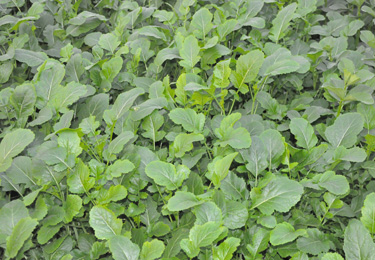 |
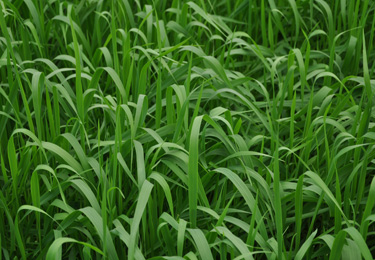 |
|
| The brown mustard (Crucifere family) can be planted in any season in the greenhouse, while in land it has to be planted in Spring. It has a biofumigant action and it’s characterized by lots of roots. |
The avena strigosa covers the soil and produces lots of biomass. It’s optimal also the action of capturing nitrates. |
Green Manure: mixture and biodiversity
In greenhouse, the mixture of green manure is the best solution. Thanks to this technique it’s possible to interact with the multi-faceted ecosystem.
Most employed mixtures are a bunch of species from at least two of these botanical families: grass plants, legumes, crucifere. However, mixtures can be arranged as your wish by introducing other species such as boraginaceae, solanaceae or polygonaceae, please be always aware of the fact that these species have to be free from parasites which can affect horticultural crops.
Thanks to the mixture it’s possible to supply the soil with organic substance, the soil will be characterized from different roots. Mixtures helps the soil with the restore of homeostasis and fertility.
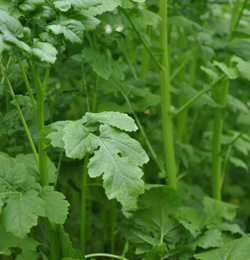 |
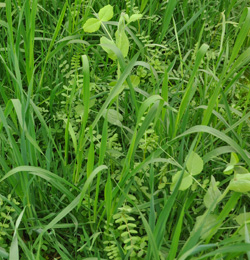 |
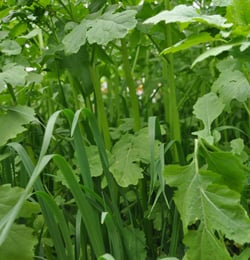 |
||
|
Mixture of crucifere (horseradish, white mustard, rapeseed). |
Mixture of grass plants and legumes. |
Mixture of oat, green rapeseed, white mustard, vetch. |
Green manure: management at the end of the cycle
In the greenhouse the cover crop has to be buried in order to allow the preparation of the seedbed.
The burial depth has to remain under 20 cm and well spread in the treated area. The right equipment for this work is without any doubt the stone burier, which can work directly in the soil. It’s better to avoid the application of the plough because it can’t reach the depth of the current machines.

The most appropriate moment to carry out the burial of the green manure crop is the beginning of the blossoming. For lots of species this is the same moment when the biomass is ready to reach its maximum and its degradability is stable. Besides, at the beginning of the blossoming it’s possible to avoid the production of the seed from more premature individuals. However, the burial of the green manure can be anticipated when there is the necessity to start a new cultural cycle. The benefit brought by the green manure it’s significant.
Conclusion
In this article we have analyzed the green manure technique and the main crops which can be applied in the productive cycle of farms, according to the need of benefits. This technique is very important, especially from the point of view of a sustainable agriculture because it allows the restoration and the improvement of the fertility and the biodiversity in lands.
In order to achieve best results from the green manure, it’s important to work with horticulture machines, especially during the burial at the end of the cycle.
If you need more information or you want to know which stone burier machine meets your needs, do not hesitate to contact us! Our experts Forigo are always at your disposal.

Research and Development Division of Forigo Roteritalia. Team of experts engaged in the study and analysis of the main agricultural and horticultural techniques used today. Knowledge combined with competence are the starting point for continuous improvement in a scenario of innovation and technological development.
Upcoming Exhibitions
30 NOVEMBER _2021
DLR Feldtag Gemüsebau 2021: horticulture and field trials in Germany
30 NOVEMBER _2019
Orticoltura Tecnica in Campo – XVII edition
30 NOVEMBER _2019
Agrilevante 2019: where agriculture become the main focus
Previous Exhibitions
30 NOVEMBER _2019
Expo Agrofuturo 2019: sustainability and innovation in South America
30 NOVEMBER _2019
Tech&Bio 2019: sustainable agriculture goes to France
30 NOVEMBER _2019
Enovitis 2019: innovation in viticulture












